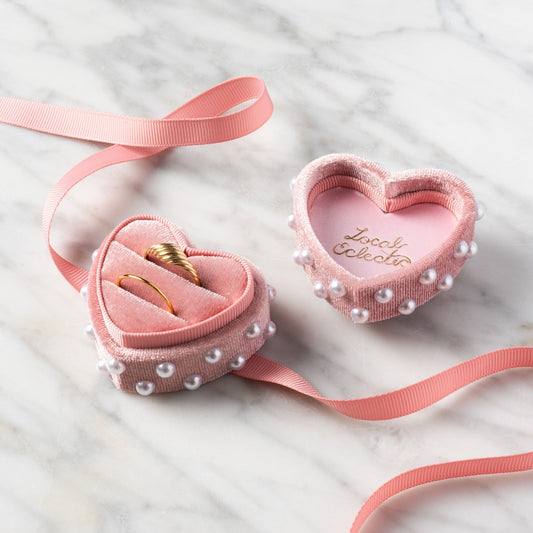In jewelry design, a setting refers to how the different gems in a piece are held in place, and it’s one of the main elements that gives a design its personality. Settings impact the shape, size, sparkle factor, and price of your jewels, plus they affect how you should care for a piece. Read on to learn all about five of the most popular jewelry settings, how they’re created, and the benefits of each.
Bezel Setting

A bezel setting holds a gem in place with a piece of metal that wraps around and slightly over the edges of the gem. It’s one of the sturdiest settings because of how the metal overlaps the stone, but it can also make the stone appear a bit smaller since it covers a portion of the surface area. A bezel setting also allows less light to shine through the stone, making it a favorite among smooth gems, but less so with faceted gems that sparkle more with added light.
Prong Setting

A prong setting has 3 or more small pieces of metal called prongs that bend over the gem to secure it in place. Prongs come in a variety of shapes and sizes, some more ornamental and others a simple polished metal. Prongs cover much less surface area of the gem, making the gem appear larger and also allowing light to shine through, so it’s often used with faceted stones to create extra sparkle. The thickness of a prong will vary depending on the size of the stone and whether or not the piece is meant to be worn everyday. Engagement rings for example need stronger prongs to hold the stones in place with regular wear.
Channel Setting

A channel setting features multiple gems aligned in a row with a piece of metal bending over the edges. It’s similar to a bezel setting, but holds more than one stone. A channel setting is great for someone who likes the look of a bezel setting but prefers faceted stones. The way the stones are lined up in a channel setting creates a gorgeous geometric style, but it’s less secure than other settings since every edge of each gem is not held in place with metal.
Cluster Setting

A cluster setting is designed to combine three or more stones into one setting. It’s one of the more unique and intricate settings since these clusters can be created in various shapes and designs. Some cluster setting favorites include floral settings and more abstract clusters that feature multiple stone cuts. A cluster setting is a great choice for statement styles since so many stones can be used, and it’s a perfect way to utilize different colors and shapes while maintaining a cohesive design.
Pavé Setting

Pavé settings feature multiple small stones set closely together, usually by drilling holes into the metal and placing the gems in these holes, then securing them in place with small pieces of metal in the form of beads or small prongs. The term “pavé” comes from the French word pavement, and is thought of as similar to the process of laying bricks in a row. Pavé settings are one of the most difficult to create and require extra skill, and are also more susceptible to stones falling out due to the smaller amount of metal holding them in place, and so extra care should be taken with pavé settings.
So how do you choose a jewelry setting? The easy answer is style. Whichever setting catches your eye and has the design and shape you’re going for is the perfect place to start. If you’re concerned with longevity for pieces that you’ll wear every day, a bezel setting is the most secure and requires the least amount of maintenance. Prong and cluster settings on the other hand should be tightened regularly by a jeweler so that the stones don’t loosen, and pave and channel settings are more likely than others to lose stones. But don’t let that scare you away from a style that speaks to you; with proper jewelry care, any of these options should last you for years.





